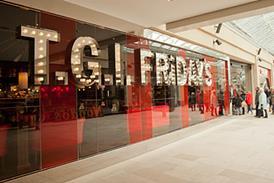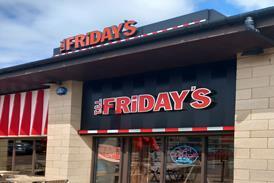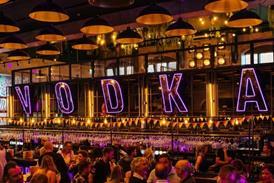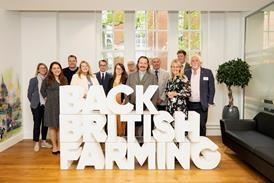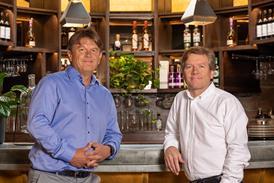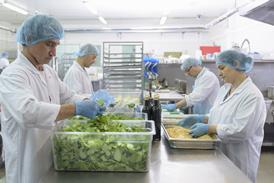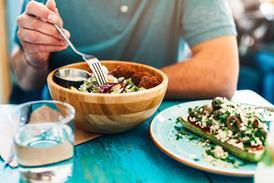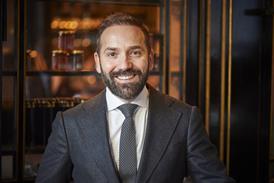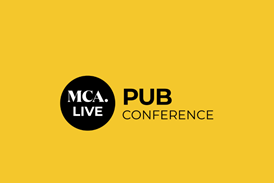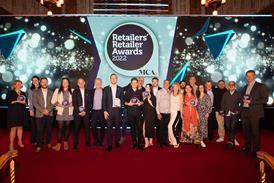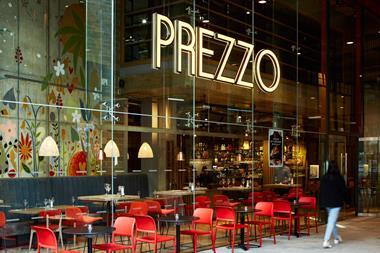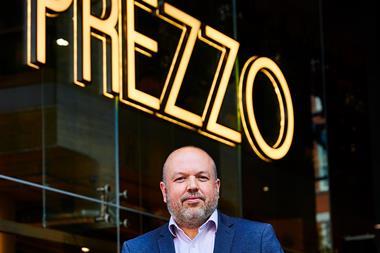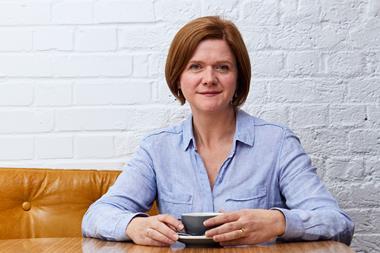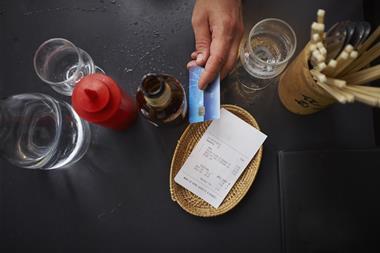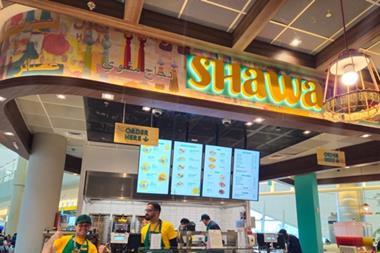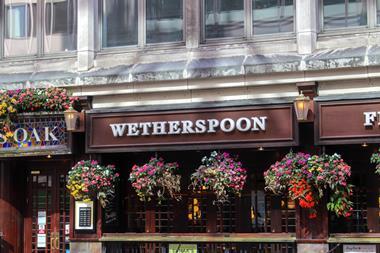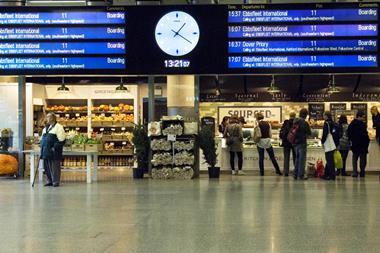Top story
Jamie’s 10p ‘sugar tax’ on fizzy drinks
Jamie Oliver is imposing his own levy on sweet drinks sold in his restaurants in protest at the government’s refusal to introduce a “sugar tax”. Oliver, the celebrity chef and restaurateur, will add a 10p charge to every drink with added sugar in an attempt to highlight the dangers of too much sugar, as well as sending a message to government to take urgent action on childhood obesity.
Several other restaurant chains are expected to join Oliver’s “sugar tax” protest, with the money raised going to fund education about healthy eating for children of nursery and school age.
Oliver said: “I was born into the restaurant industry and I truly believe that by joining together on this issue we not only send a powerful and strong message to government but we also have the potential to make a long-lasting legacy that could ripple across the world.
“I’ve seen first-hand the heartbreaking effects that poor diet and too much sugar is having on our children’s health and futures. Young children are needing multiple teeth pulled out under general anaesthetic and one in three kids [is] now leaving primary school overweight or obese. Soft drinks are the biggest single source of sugar among school-age kids and teenagers and so we have to start here.”
An explanation of the sugary drink levy will be printed on all menus in Jamie Oliver restaurants and waiting staff will be briefed about the alternative choices for children. Oliver points out that tap water is always freely available.
Oliver does not allow fizzy, sugary drinks in his own home. He says his four children have grown up drinking mainly water or diluted fruit juice. He believes parents should explain to children which drinks are best for them and make healthy drinks fun — for instance, by adding freshly cut lemons, oranges or strawberries to iced water.
Money from the levy will be put into a fund run by the charity Sustain, which advocates better food and farming policies and practices, to support children’s healthy food initiatives across Britain. The Jamie Oliver Restaurant Group will make a donation of £25,000 to get the fund started. Oliver expects the charge — which he calls the “children’s health levy” — to raise £80,000 in the first year.
Simon Blagden, chief executive of the Jamie Oliver Restaurant Group, said: “As a business we’re concerned about the increasing levels of diet- related disease in the UK, especially in children, and while we’re not against treats, we do feel that we need to take a lead when it comes to keeping our customers informed. A levy on these drinks allows us to send a message as well as raise money to help give children the knowledge to make better choices.”
The initiative has been welcomed by health campaigners. Tam Fry, a spokesman for the National Obesity Forum, said: “Ten years ago, Jamie Oliver forced a government to act on junk school meals. Once again he has taken an initiative that should shame the government into action. His levy will be applauded by everyone who understands obesity and the health damage of excessive sugar.”
Last week, health authorities in Mexico reported a reduction of up to 12% in fizzy drinks sales following the introduction in 2014 of a “soda tax” on beverages with added sugar. A number of US states use a similar tax.
While all the main medical professions in Britain have backed a 20% tax on sugary soft drinks, the government has ruled out such a move, preferring to work with the food industry on voluntary measures. Last month Tesco announced that it will reduce added sugar in its own-label soft drinks by 5% a year.
Gavin Partington, director-general of the British Soft Drinks Association, said: “The soft drinks tax in Mexico has reduced average calorie intake by 6 calories per day. By contrast, the efforts by soft drinks companies, including … increased promotion of low and no-calorie drinks, have led to a 7% reduction in calories from soft drinks in the last three years.”
The Sunday Times
Pubs
Stop councils that ‘illegally’ dictate who buys a beer
Simon Emeny, boss of British brewer Fuller’s, is furious with a raft of Britain’s local councils who he accuses of acting ‘illegally’ in banning his strongest beers from local shops. And in his anger the chief of the £365m beer maker has finally turned to the European Commission to deliver justice.
Like many other brewers, Emeny has found his products being taken off the shelves by shops under pressure from councils that want to curb problem drinking. Emeny and his chairman last week wrote to the EC claiming the actions of 100 councils to stop retailers stocking strong beers and ciders are ‘potentially illegal’.
They are awaiting a reply.
“It’s something I feel very strongly about,’ says Emeny. ‘We know of customers who have been unable to buy their favourite beers from their local shops which I don’t think was the intention of the local authorities.’
It’s not that Fuller’s doesn’t produce some high alcohol beers – its Vintage Ale for example (8.5 per cent) or Imperial Stout (10.7 per cent), which is roughly twice the alcohol levels of a typical strong lager. But Emeny argues quite convincingly that such relatively high priced craft ales are not the habitual choice of street drinkers.
‘Our premium ales are for special occasions and out of reach of most of the potential customers that the councils are trying to stop buying alcohol,’ he says.
One tactic to cope with the bans is a new ‘click and collect’ service where customers will be able to order beer to collect and take home from their local. ‘We call it next next-dray delivery,’ says Emeny.
Unlike Young’s – until recently a near neighbour – Fuller’s has no plans to leave London.‘We recently invested £5m in our brewery and are spending more this year, which makes it pretty clear that we’re at Chiswick for the long term,’ says Emeny firmly. ‘The brewery is incredibly successful and I think part of that is being based in London.’ The location of brewing is a topical issue. Last week, it was revealed that popular beer Doom Bar – widely regarded as Cornish – is, in fact, now brewed in Stoke on Trent.
Emeny on his own biggest selling beer: ‘Certainly London Pride wouldn’t have the same premium values if it was brewed somewhere else.’
Running a brewery is a job in which it is quite all right to admit to spending a lot of time in the pub, as Emeny does. But as well as visiting Fuller’s 189 managed and 203 tenanted pubs, he visits rival pubs constantly.
‘It’s important to keep an eye on the competition,’ he says, going on to list qualities he demands of his pubs. ‘The first impression is absolutely critical, the outside has to look smart, with flowers and shiny brasses and inside there’s got to be a great atmosphere.’
Despite a general perception that pubs are ‘closing right, left and centre’ as Emeny puts it, ‘last year was the best I can ever recall for our tenanted pubs, which shows that if you continue to support your tenants and invest in their pubs, both you and your tenants can do well.’
He warms to his theme: ‘Our managed estate has achieved nearly 15 per cent growth over the last two years. During the downturn we never stopped spending money on our tenanted pubs which meant they were able to grow their business and that clearly meant we grew ours.’
Fuller’s pubs enjoy much better locations than some of its rival pub companies but there’s a reason for that, insists Emeny. ‘If you run a 170-year-old business you buy pubs based on what they’re going to be like in 20 or 30 years’ time. It’s not luck that we have well located pubs, we’ve been very selective.’
But aside from the local councils banning strong ale from shops, the brewing industry is facing a steady and long-term decline in beer sales as Britons have either switched to other drinks, such as wine or cider, or simply cut down. Emeny also, however, blames the hated annual beer duty increases, known as the beer escalator. That was scrapped by Chancellor George Osborne, who also lopped a penny off a pint for the last three years.
‘You’ve no idea of the damage that the duty escalator did to the industry, and the effect of its abolition and the beer duty cut has been fantastic. It’s been the catalyst for the rejuvenation of the beer category and has helped us create a large number of jobs.’
Next Emeny would like to see a similar cut to VAT on food served in pubs: ‘It’s not a level playing field as we pay VAT on all our food whereas supermarkets don’t. This penalises businesses like ours which are helping the economy and reducing youth unemployment.’ But he does accept that ‘in the wider context it’ll be difficult for them to reduce VAT but I would certainly campaign for a further rate cut’.
Last year’s figures showed strong growth across Fuller’s three businesses – the managed, tenanted pubs and the brewery – and the company continues to expand, launching its first ever craft lager Frontier two years ago. It is now its second biggest-selling beer.
But it has also decided to follow customers’ changing tastes by buying cider-maker Cornish Orchard and half of cider and pizza business The Stable.
A traditional brewery moving into lager might have been controversial, but says Emeny: ‘People accept that for the brewery to continue to thrive, we’ve got to be a bit more experimental and broaden what we offer.’
The Daily Mail
Tour de France in Yorkshire boosts sales of ale as Timothy Taylor sees profits double
Two family-owned breweries have revealed mixed fortunes for their beer and pub businesses as the popularity of craft beer continues to soar – but overall beer sales are still in long-term decline.
West Yorkshire brewer Timothy Taylor, whose Boltmaker ale was named champion beer of Britain last year, saw pre-tax profits double to £2.4million in the year to September 30, 2014 even though overall turnover dipped slightly from £21.9million to £19.5million.
Directors said that trade was boosted particularly in the second half of the year by the crowds drawn to watch the Tour de France’s Yorkshire stages. The company also reported that the performance of its pub estate ‘exceeded expectations’.
Meanwhile, Cotswold-brewer Hook Norton said that its new ale, Lion, was picking up sales across the estate and nationally and while the overall results were ‘satisfactory’, it added that ‘much still needs to be done to increase the volumes of cask beer produced to dilute the fixed costs of the brewery.’
Hook Norton’s brewery is seen as one of the best examples of a Victorian tower brewery, still using the steam engine which was installed in 1899, and last year the company was awarded £90,000 in National Lottery funds to help restore the old boiler chimney.
Turnover for the year to September 30, 2014 fell slightly from £7.5million to £7.1million while profits dipped from £402,000 to £294,000.
The Daily Mail
Leisure
Petrol price fall puts brake on motorway services firm Moto as turnover drops £37m
Moto, the UK’s largest motorway services company, has blamed last year’s fall in petrol prices for a £37million drop in turnover.
The company, which has been put up for sale by its shareholders, including Australian bank Macquarie, saw sales fall from £840million to £803million in the year to December 24, 2014. Sales not including fuel increased by 7.8 per cent, while pre-tax losses fell to £72.9m from £77.6m the year before.
Moto, which used to be part of the Granada motorway network and then Compass before demerging in 2006, has 40 motorway service stations across the country plus a few sites on A-roads. It built Britain’s first carbon-neutral services on the A1(M) in Kirk Deighton, North Yorkshire. Like its smaller competitors Welcome Break and Roadchef, Moto was saddled with huge amounts of debt when it was acquired by private equity and last refinanced in March this year.
This debt matures after 12 months, which has prompted its owners to consider a sell-off. This latest set of accounts shows that interest charges are costing the business £130m a year to other companies within the group, which hold the external debt.
The Daily Mail
Drink
One in ten people say they’re ‘unable to stop drinking once they’ve started’
New research has found that around one in ten people are unable to stop drinking once they’ve started. A new YouGov survey has found that 12 per cent of people say they find it difficult to stop drinking once they start on their first glass.
Worryingly, a small percentage of those people report that this happens on a weekly or nightly basis.
The research also found that alcohol is mostly being consumed by 18-24 year-olds, with 36 per cent drinking to a ‘harmful’ extent.
Meanwhile, 29 per cent of the general population are currently considered to be drinking to ‘harmful’, or ‘harmful and already problematic’ levels.
Metro
Boss lifts the bar and tells the world to savour a wee drop of the soft stuff
Roger White looks like he could do with a tonic. His left arm is in a sling and he is clearly in some discomfort. A skiing injury, perhaps, or maybe a mishap on the rugby field? “I broke my elbow playing badminton,” the burly chief executive of AG Barr admits sheepishly. Still, the advertising promises that Irn-Bru “gets you through”, so a slug of the Scottish drinks group’s signature product might be just the ticket.
They know all about the “restorative” qualities of Irn-Bru north of the border, where many swear by the soft drink as a hangover cure. If Mr White has anything to do with it, however, the word is going to spread from Britain to mainland Europe, the Nordics and deeper into Russia — where the perils of the hangover are not unknown and already the biggest market for Irn-Bru outside the UK.
The drink is also appreciated on the Spanish costas. “There are a few shops in the Torremolinos and Magaluf area that sell absolutely bucketloads of the stuff to rather lobster-coloured Scots on their holidays.”
So is there any scientific basis to support the hangover cure theory? Mr White laughs. “Most people do say that it’s very helpful to them at times when they’re in dire need. But I don’t think I’d like to get into the science of that.” So the jealously guarded 114-year-old recipe will remain something of a secret for a little while longer, then.
Not that Barr is all about Irn-Bru. It remains its flagship brand, but under Mr White’s stewardship of the company over the past 13 years the proportion of total sales from Irn-Bru has fallen from almost 70 per cent to about 40 per cent through a mixture of acquisitions and innovations.
The biggest acquisitions were Strathmore, the Scottish mineral water, bought in 2006 for £15 million; Rubicon, the maker of exotic fruit juices such as guava and lychee, costing about £60 million in 2008; and Funkin, a cocktail mixer and syrups business, acquired this year in a deal worth up to £21 million.
Buying the latter, whose range includes mixers for piña colada, strawberry daiquiri and espresso Martini, has given AG Barr a push into the bar and restaurant market, although Mr White admits that the group’s presence in the licensed trade is limited to less than 10 per cent of its sales.
Thus there is a reliance on the retail sector, where you might think that fierce price competition among the supermarket giants is putting unbearable pressure on Barr’s margins. Not so, apparently: “Value is important, but our objective is to build brands that people want and then work with our customers to make sure our brands are available to people wherever they are shopping. Under a third of our business is in large retailers, so two thirds of our business is in what we would term ‘impulse’, whether that’s a forecourt or at a train station or at a small shop or café.”
In market share terms, Barr has about 23 per cent of the Scottish soft drinks markets, but about 3 per cent in England and Wales, which translates into about 5 per cent of Britain as a whole. That puts it behind Coca-Cola and Britvic, the Pepsi bottler, and the Lucozade and Ribena business now owned by Suntory, of Japan — although Scotland has long been one of the few countries in the world where Coke is outsold by a competitor drink, in this case Irn-Bru.
If things had turned out differently, Barr would be higher up the British league table today as part of a significantly bigger company. In 2012, Mr White took advantage of Britvic’s weakened position to initiate merger talks and that November the two companies announced an all-share £2 billion marriage to create Barr Britvic Soft Drinks. But the deal was referred to the Competition Commission and by the time it was cleared Britvic had entered smoother waters and had decided that it no longer needed a deal.
Mr White, who would have taken the top job at the enlarged group, calls the episode as “ancient history”, but admits it was disappointing. “We put a lot of work into it. The business case was very strong from both an industrial logic point of view and a financial point of view, but these things happen and the important thing for us was that we didn’t take our foot off the gas in terms of our own business performance.”
Less well-known is that, even as the Britvic deal was foundering, Barr looked at the Lucozade and Ribena business when it was put up for sale by GlaxoSmithKline. So how serious was its interest in the £1.3 billion business? “We look at everything that comes along in our space that’s relevant.” So would you still look at such a big deal? “If there are opportunities to create value for shareholders, we’d look at them.”
The mixture of organic growth and occasional acquisitions has served Mr White well since he became the first non-Barr family member to become chief executive. During his time with the company, turnover has jumped from about £100 million to £275 million, pre-tax profits have risen from less than £12 million to £45 million and its market cap has risen from about £70 million to about £720 million.
Although it has been a quoted company for 50 years, the Barr family retains a combined stake of about 25 per cent and Robin Barr, great-grandson of the founder and chairman between 1978 and 2009, remains on the board as a non-executive director (having missed only one board meeting in 50 years as a director).
As a consequence, one of the questions Mr White is asked most often is whether he has been allowed a free hand to run the company as he sees fit. “To give Robin his due, absolutely everything he said to me in our discussions prior to me starting came true. He said that he’d let me get on and run the business. He supported the changes that were going to improve the business and has continued to do so from the first day.”
Proof of the free rein he was given came in 2007 when he took the tough but necessary decision to rationalise the business by closing down smaller, costly operations around Scotland and the rest of the UK, including its original headquarters in the east end of Glasgow and moving its Scottish base ten miles down the road to a £37 million facility in Cumbernauld.
More recently, as part of his wider expansion plans south of the border, Mr White has created a huge manufacturing, warehousing and distribution hub in Milton Keynes at a cost of about £53 million. The third phase, kicking off in the final quarter of this year, will cost £11 million.
One potential threat to the business is the risk that the government might seek to clamp down on the fizzy drinks manufacturers as part of efforts to reduce child obesity. Does he feel that legislation is inevitable? “No, I don’t think it’s inevitable at all. Our industry is doing a huge amount to ensure that consumers have a choice of low and no-calorie or sugar products.”
He points out that sugar-free Irn-Bru now accounts for 38 per cent of the brand’s sales, arguing that the “vast majority” of the company’s growth is coming from water, flavoured water and lower-sugar drinks. “If you want an Irn-Bru, you can have a sugar-free Irn-Bru, which tastes great, or you can have a full-sugar Irn-Bru.”
You can, for that matter, have an Irn-Bru ice cream, an Irn-Bru beach towel or a pair of Irn-Bru slippers. Sadly for Mr White, the range doesn’t extend to an Irn-Bru sling for his elbow.
The Times
Scottish craft beer squares up to Scotch
Beside the cured salmon, prime beef and gourmet chocolate, there was a more unusual addition to the menu at this year’s Scottish food and drink industry awards — an ice-bucket of beers on every table.
The craft beers, supplied by eight founding members of the fledgling Brewers Association of Scotland, were a statement of intent for a small but fast-growing sector that hopes to establish itself as a central part of a national food and drink industry that generated £5.1bn in exports last year.
Scotch accounted for nearly £4bn of that and founders of the brewers’ association say that banding together and working more closely with the Scottish government will help craft beer win a place alongside whisky as an alternative national drink.
“We want to put Scottish craft brewers on an international level, as a group and with government backing,” says Scott Williams of Williams Bros Brewing, an association founder.
Alloa-based Williams Bros has nearly tripled its capacity during the past five years to an expected 36,000 hectolitres, or 6.3m pints, this year — a tale of rapid expansion common in the Scottish craft beer sector.
Scotland’s craft beer boom is part of a wider UK trend, since former chancellor Gordon Brown in 2002 introduced progressive beer duty relief that made small producers more competitive against the mass market brewers.
It also reflects the influence of independent US brewers that have developed distinctive new beers that use hops to stronger effect than in traditional brews.
Details of the Scottish industry are scanty, and one of the new association’s top priorities is to survey the 85-100 craft brewers operating in Scotland to establish the size of their operations and get a sense of their plans.
“There’s a bit of an information vacuum,” says Dougal Sharp, founder of Edinburgh-based Innis & Gunn and the first chairman of the brewers’ association, which was established with government support in January.
The group aims to make it easier to emulate the whisky industry’s international brand building and tourist tie-ins, while also working to maintain quality standards, Mr Sharp says.
Innis & Gunn is planning to start building its first brewery this year after previously relying on outsourced production for beers that it ages in oak casks. Other independent brewers have already expanded output.
After years of struggling to keep up with demand, Fyne Ales, situated near a scenic loch of the same name in western Argyll, opened a £2m brewery in November.
The Highland location is an important part of Fyne Ales’ character, says sales manager Chris Black, pointing at a small river rushing off the heather-clad mountain behind the brewery. “That’s our water supply,” Mr Black says.
Fyne Ales is a founding member of the association and with its on-site bar and shop and enthusiastic participation in festivals and other events is well placed to become a fixture of Argyll’s tourist scene.
Richard Lochhead, the Scottish cabinet secretary responsible for the food and drink, says he is supporting the association so that it can “provide a strong voice for the craft beer industry”.
“Scottish craft beer is a real success story,” Mr Lochhead said. “The wider Scottish economy has benefited from the increased income through exports, new jobs and the enhanced reputation of Scottish food and drink on the world stage.”
The Scottish government has offered direct backing to some brewers, in March awarding a £1.5m grant to national craft sector leader BrewDog, an iconoclastic brand based in Aberdeenshire with an international marketing arm that includes bars from São Paulo to Tokyo.
With capacity of 250,000 hectolitres a year, BrewDog is already too big to qualify as a member of the association and brewery co-founder Martin Dickie says that a Scottish group “maybe too small a niche”.
Instead, BrewDog is trying to establish a UK-wide definition of craft beer through another new association of British craft brewers that it plans to establish with English producers including Camden Town Brewery and Magic Rock Brewing.
Big brewers are causing confusion by marketing craft beers that do not reflect the values of the independent sector and have less hops and taste, Mr Dickie complains. “For them to be allowed to call it ‘craft’ is dishonest,” he says.
The Scottish craft beer sector is a ferment of innovation, bubbling with new products, marketing methods and fundraising strategies.
To promote its heather ale, William Bros commissioned a comic book retelling the 19th century poetic tale that inspired its invention and one of its biggest-selling beers is a fusion of lager and India pale ale. Edinburgh’s Stewart Brewing offers a craft brew kitchen where drinkers can make batches of beer to their own taste.
Innis & Gunn focuses on the “curiously distinctive” taste its beers get from being aged in oak barrels or percolated through wood chips, an approach shared for some brews by Harviestoun, which describes its Ola Dubh 12 as tasting of “smoky Worcestershire sauce, leather, iodine and grilled steak”.
BrewDog smashed crowdfunding records by raising £5m in the first three weeks of its “Equity for Punks”, despite being forced to correct errors in material sent to potential investors. The craft brewer celebrated the successful kick-off to its £25m fundraising effort by dropping taxidermy “fat cats” with parachutes over the City of London.
Innis & Gunn is aiming to raise £3m with a crowdfunded beer bond that promises to pay a 7.25 per cent gross rate in cash — or 9 per cent if investors are willing to accept “beerbucks” that can only be spent in the brewer’s online shop.
Financial Times
Beauty and the beer: Carlsberg launches men’s grooming products
Cleopatra reputedly bathed in asses’ milk. Now, men can shower in beer, as Carlsberg, the Danish brewer, launches a bathtime range, which it describes as “probably the best men’s grooming in the world”.
The Copenhagen-based group has developed shampoo, conditioner and body lotion for men that — unlike brand extensions merely carrying the name of the parent company — contain the actual product, in this case “premium Carlsberg beer”.
The world’s fourth-largest brewer by sales said the idea came from studies highlighting the beneficial effects of vitamin B and silicium that are contained in barley, hops and yeast — the main ingredients in beer.
Carlsberg said that the new beauty line “gives us a chance to talk about the health benefits of beer in terms of a it being a drink that’s good for the body, when consumed in moderation”.
The diversification came as a surprise internally. Erik Lund, head brewer, said: “When I first heard we were supposed to make a beauty series for men, I thought it was a joke.”
However, the brewer said that its research had identified a gap in the men’s beauty market.
It found that 67 per cent of Carlsberg drinkers in the UK said they were prepared to buy grooming products containing beer, and that 62 per cent of men who rubbed lotion on their hands and arms used their girlfriend’s or wife’s.
Spiros Malandrakis, senior analyst at Euromonitor International, said that big brewers were having to innovate to fight market share losses. Craft beers and spirits had increasingly found favour with younger drinkers at the expense of beer.
“The grooming products are aimed at a core demographic of aspirational, young urban professionals,” he said. “They are a talking point that might do well on social media, but gimmicks will not be able to secure a reversal of the tide of craft.”
Carlsberg has faced a slew of problems, notably in Russia, where a sharp drop in beer sales contributed to the departure this week of former chief executive, Jørgen Buhl Rasmussen.
For the time being, the “limited edition” range is only available in the group’s main Copenhagen store and online.
At €63.84 for the set of three 250ml bottles, the grooming products are considerably more expensive than using beer from a €2.40 500ml can of Carlsberg in the shower.
Carlsberg said that the beer used in the toiletries is freeze-dried to increase the concentration of the proteins and minerals. “We think the beauty range is a better way of getting these ingredients. But we wouldn’t discourage anyone from washing their hair in beer,” it said.
Financial Times
Business
Fear and self-loathing at the top
Looking foolish or fearing they are not quite up to the job — leaders are just as vulnerable to fear and anxiety as any other person. What is different, according to research by Roger Jones of the consulting firm Vantage Hill, is the extent of those insecurities. “Leaders’ unconscious personal fears affect their performance, that of their team and that of their company,” he said. “They spark numerous dysfunctional behaviours, including poor decision-making, focusing on survival rather than growth, and failing to act until a situation reaches crisis point.
“This comes on top of more personal bad behaviour such as temper tantrums and refusing to listen to others’ opinions.”
Few leaders talk about their fears, but the effects are undeniable, agreed Andrew Morris at the Academy of Chief Executives, a peer learning organisation. “One — probably the top of the list — is that of being found out,” he said.
This can take the form of “impostor syndrome”, where people feel they have fluked their way to the top and eventually someone will notice, or what Morris calls “encore anxiety”. This, he explained, comes when “someone has done a great deal or made a big breakthrough” that leads to them becoming too risk averse, worrying that if they can’t repeat the trick, it will be seen as a fluke.
Another fear is that of losing the friendship of colleagues after being promoted above them, he added, while some male bosses struggle with the burden of trying to emulate the success of their fathers.
“These [fears] play out in all sorts of ways. People are rude, they have anger management issues, they make wrong decisions, they lose perspective — all sorts of things that can be very disruptive to the team, particularly as the one thing that people crave from their leaders is consistency.”
One reason why all these anxieties matter to organisations, not just the individual leader, is that many people react in kind, said Jones. “For instance, I know one chief executive who has irrational temper outbursts. Now other managers do it too, because they’ve seen him behave like this and they think it is OK.
“In another case, a team of leaders colluded — unconsciously — and got rid of a newly appointed chief executive. That chief had come in with a change agenda, but the team, without realising it, was frightened of change. So they turned up to meetings and agreed with everything, but did not implement any of it afterwards. Nine months later, the chief executive had no choice but to leave.”
About 60% of the 116 leaders questioned for Jones’s research, which was published in Harvard Business Review, said that fear affected their executive teams’ behaviour.
The most common problems were a lack of honest conversations; excessive political game-playing; an inability to think outside an individual’s own sphere of business; and a willingness to tolerate bad behaviour.
Two thirds reported that executives in their organisation struggled to talk to one another directly, and would sometimes lie.
Dona Roche-Tarry at CT Partners, the executive search firm, believes that fear-driven leaders are most likely to be found one or two levels down from the very top. “This is an issue, especially for those who have been promoted very quickly,” she said. “They feel they need to appear strong and capable and have very few people they can talk to about their fears — they may even deliberately push them out of their thoughts.” However, if you interview the people working for them, and the effects of those fears become visible. “Feedback such as ‘he rules with an iron fist’, or reports of screaming at people, can suggest an underlying fear or anxiety.”
However, Roche-Tarry said, the growth of psychometric testing for senior candidates might eventually mean that those with problematic traits are identified sooner and either weeded out or given the opportunity to change.
Jones is optimistic. “Most leaders can manage their fears,” he said. “Those who are self-aware are more understanding of what dysfunctional behaviours they may have, and they can try to prevent them from happening.”
One of the most effective approaches for leaders is developing their emotional intelligence: simply being aware of a fear — turning it from unconscious to conscious — can help to secure control over it. This does not mean finding a therapist; a coach with psychological training or even a good book can make a big difference, Jones said.
At an organisational level, he recommends making it easier for people to speak up. “That is a question of things such as guidelines about how team members talk to each other and what sort of behaviour is acceptable. If you can get to the point where you are having honest conversations, all the other dysfunctional behaviours become less significant.”
Leanne Wood, the human resources director at the drinks group Diageo, said that Jones’s findings were interesting but did not “resonate” with her experience — possibly because the company’s culture encourages openness.
“We are an organisation where people feel they can disclose who they are and what matters to them.” she said. “One thing that strikes me in the research is that it is about hidden things — things that are unsaid. We have an environment where there is very little that can’t be said.”
Wood and her team also make sure that all managers and employees know how to listen when others raise concerns.
“Both parties have a responsibility to build an environment where difficult things can be said. The best relationships … are where people are prepared to tell us how it is,” she explained. “They can be challenging relationships, but that’s fine, because we know that the other people are there with you and for you.”
Great hang-ups of leaders
Impostor syndrome: The thought of being “found out” as incompetent or as having been promoted above their talents hits the confidence of leaders and affects their relationships with peers.
Underachieving: Even some extremely experienced executives can be afraid of not making the grade. This fear of underperforming can lead to excessive risk-taking.
Appearing vulnerable or foolish: This worry limits people’s ability to speak openly with others.
Dying: literally, or in a professional sense. This can lead to a fixation with status and money, which in turn can lead to overly risky behaviour.
Political attacks by colleagues: Leaders who fear this can become excessively cautious and unwilling to trust others.
The Sunday Times
Restaurants
Indie lounge comes to Gaucho Dubai
A new concept is coming to Gaucho in Dubai. Indie, which is a known brand in Beirut is making its way to the city after the summertime and will be located on the upper level of the Argentinian restaurant based in DIFC.
It’s the result of a collaboration with the makers of the famous Iris brand – which has Iris Dubai, Iris Yas Island and White Dubai. The Add-Mind group is also responsible for bringing the UK’s Toy Room venue here recently.
“We are truly excited for this partnership that aims to bring out the best of the two parties’ practices and put them together in a unique brand that’s never been seen or experienced before in Dubai,” Ross Butler, Director of International Operations for Gaucho, said.
TimeOut Dubai
Watch out, waiters: app lets you dine and dash
The digital revolution has a new victim in its sights: the waiter. Technology has transformed the music, publishing and taxi industries, and restaurants could be next as a growing number adopt apps and gadgets that make waiters redundant.
One of the country’s biggest pizza chains has introduced technology that allows customers to pay at their table. Prezzo, which has more than 200 restaurants, lets diners pay without waiting for the bill, using an app on their phone. Other restaurants are experimenting with digital ordering. Inamo, a Japanese restaurant chain, has introduced digital tables where food is ordered from an interactive menu.
Throughout June hundreds of other restaurants are introducing a payment service through Bookatable, the mobile booking app. Good news for diners, who waste an average of 3½ hours each year waiting for their bill. Arguably less welcome for waiters, who miss a chance to smile sweetly in the hope of a tip as they deliver the bill. However, as yet the apps cannot actually deliver the food.
The Times
Cornish Pasty drive-thru set to open
A Cornish pasty drive-thru is opening in the South West, and it’s being billed as a worldwide first. It’s set to open its serving hatch for motorists in just a matter of weeks, but the bad news for those in Exeter is that its near Redruth, Cornwall.
Pasty-proud Portreath Bakery’s drive-through on Wilson Way, Pool will feature a 100-seat restaurant, a gluten-free bakery and a state-of-the-art baker-training facility. Owner and guest star of Great British Bake-off, Marion Symonds, said: “The plans have been in the pipeline or 18 months and I am buzzing that it is nearing completion.”
Plymouth Herald


